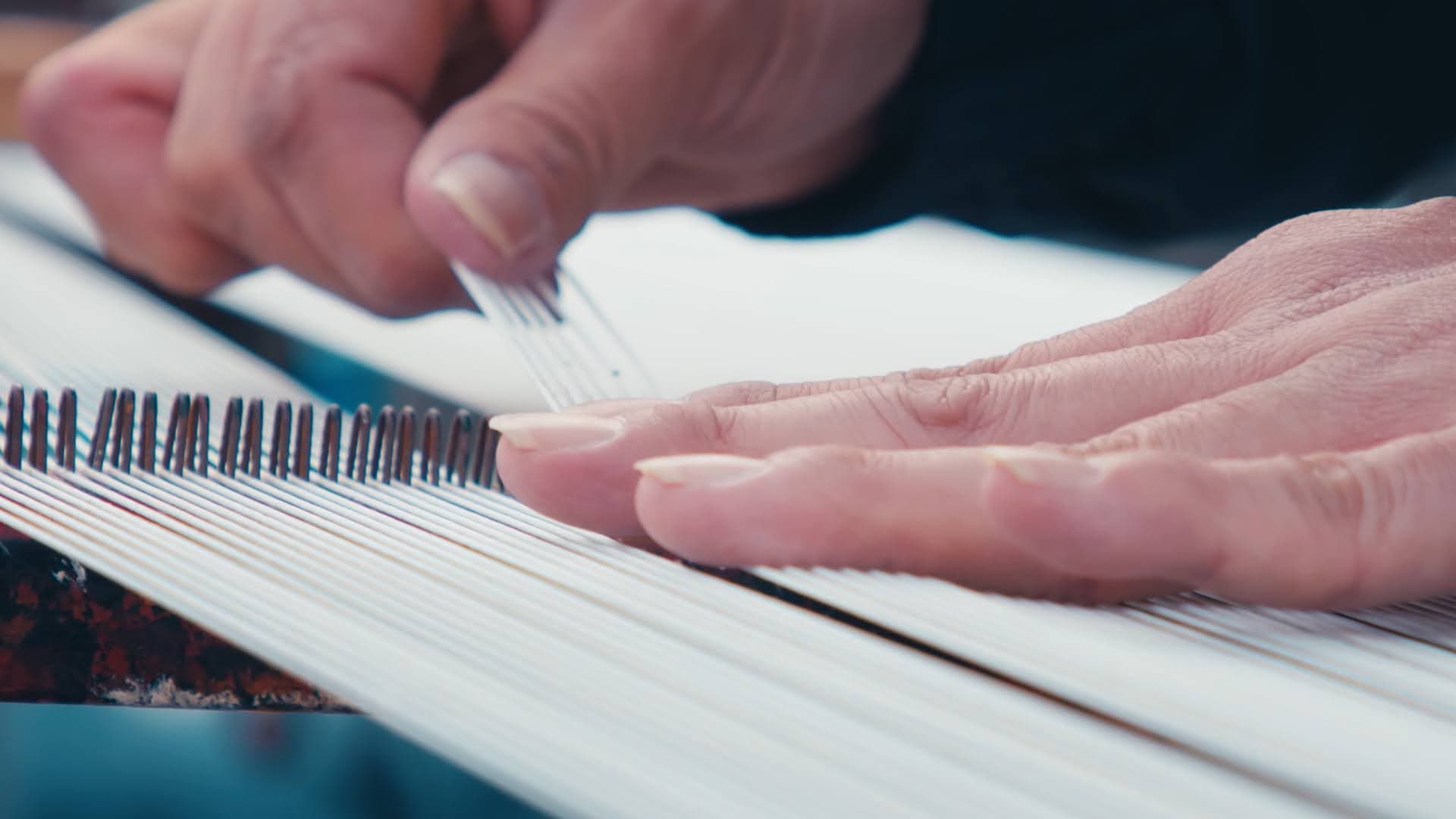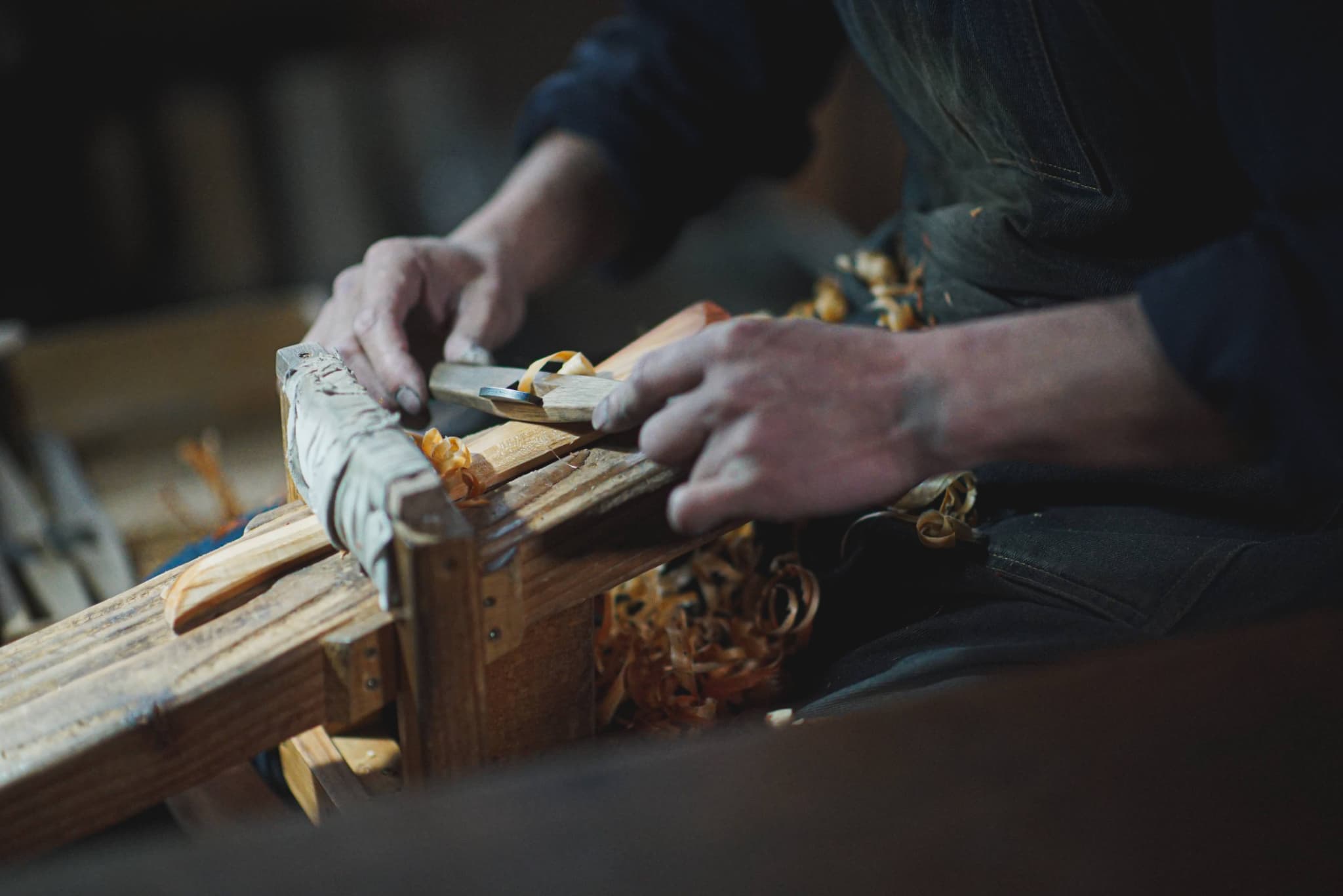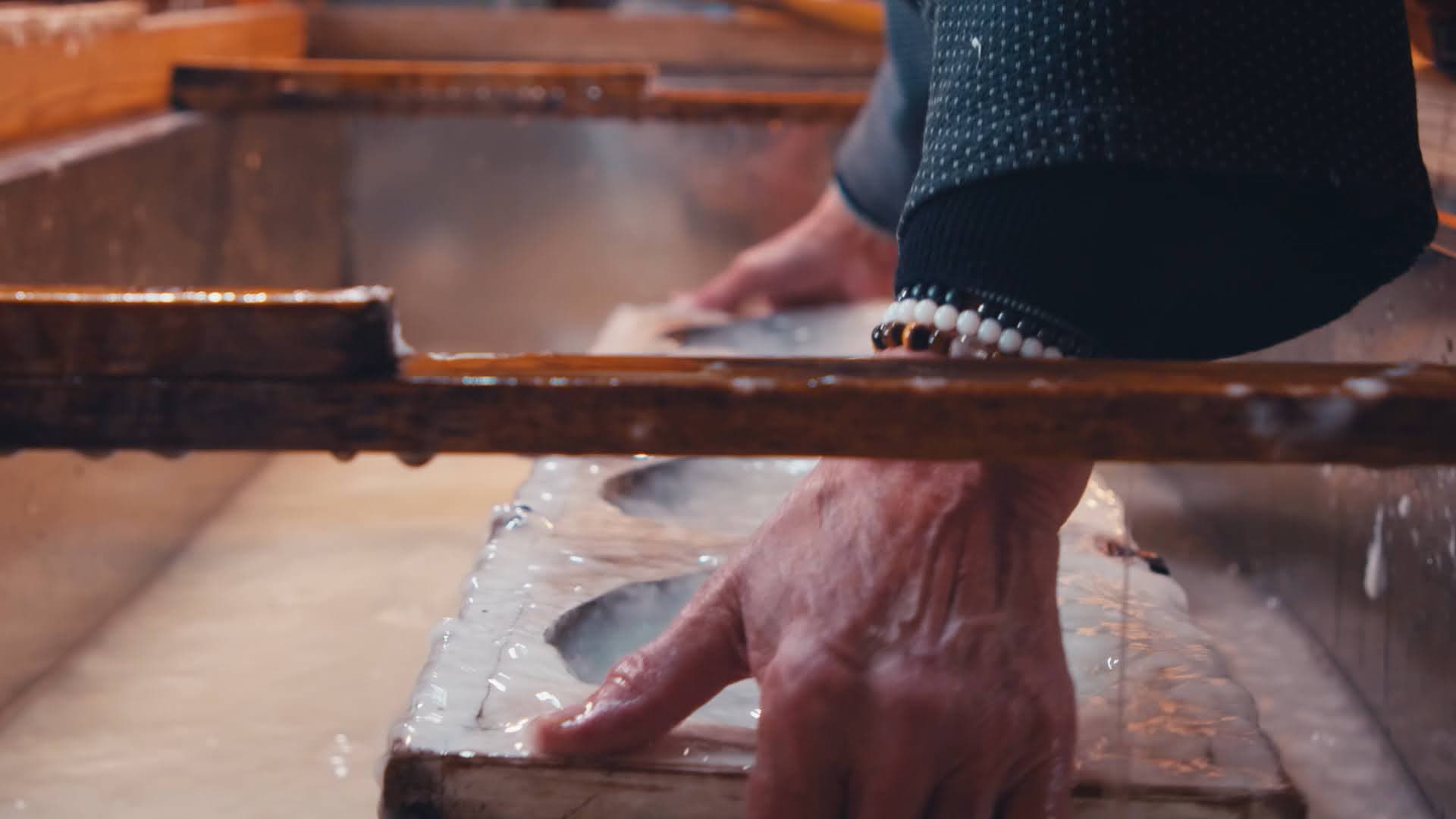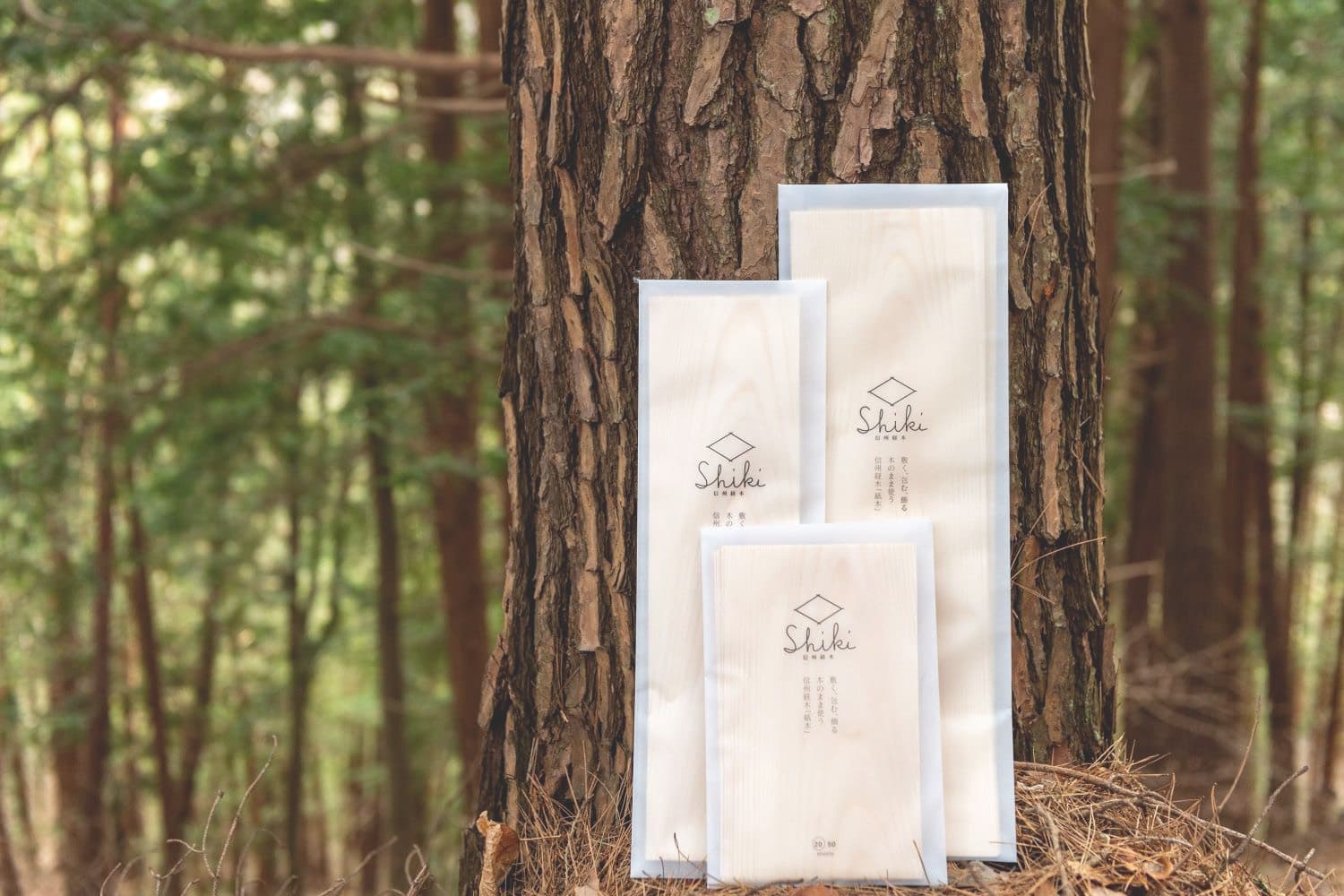
Sustainability, circulation, and life – KYOGI ‘SHIKI’
自然と暮らしの廻りあわせ – KYOGI ‘SHIKI’
Kyogi is a 100% natural wooden wrapping material made by thinly cutting fallen trees, that was once a substitute of the modern day plastic wrap. Kyogi has various uses; under crisply fried meat or fish, as a lid for dishes cooked carefully in the pot by simmering for a long time, and as wrapping paper for tightly squeezed rice balls. Wooden paper has excellent humidity control functions, breathability, and antibacterial properties, and has a faint wood scent. The air-light light wooden paper is made of a natural red pine that has a simple appearance, but no single tree is the same. Since each tree varies in grain pattern and size, craftsmanship and experience are essential to produce high quality and easy-to-use wooden paper.
The various meanings of「SHIKI」

‘Shiki’ is a kyogi brand produced in the Ina area of Nagano; the word ‘Shiki’ can be written using different kanji characters while maintaining the same pronunciation, and has various meanings. For example, the pronunciation of the word ‘Shiki’, can mean 「敷き=laying」meaning something that is laid under another, the 「織=weaving」 that weaves new things in combination with something, the enriched 「四季=four seasons」 of Nagano that produces the wood that is the material for it, and a 「紙木=paper tree」 that can change its shape freely. One can also enjoy the scent of wood that comes wafting in when you open the wrapping. For advanced use, if laid under fried food or pottery, it will absorb the excess oil and water. Furthermore, if you use wooden paper instead of a cutting board, it prevents the transfer of odors, playing notable roles for daily cooking and dining.
SUSTAINABILITY

The material used to produce Shiki, is the Japanese red pine found in Ina Valley. One of the major reasons for using red pine to make SHIKI is pine wilt disease, which is a wilting disease that kills the affected tree within weeks. The red pine found in the Ina area has been suffering from this disease, and the affected pines can no longer be used as timber. Once they catch the disease, even trees that have grown for decades have to be treated with chemicals or incinerated to prevent the damage from spreading. To save such a situation, the people of the Ina area decided to use the discarded red pine as wooden paper. Even if it cannot be used as timber, it can fully function as an airy light wooden kyogi paper. From such historical contexts, wooden paper was born to utilize resources which would otherwise have been wasted.
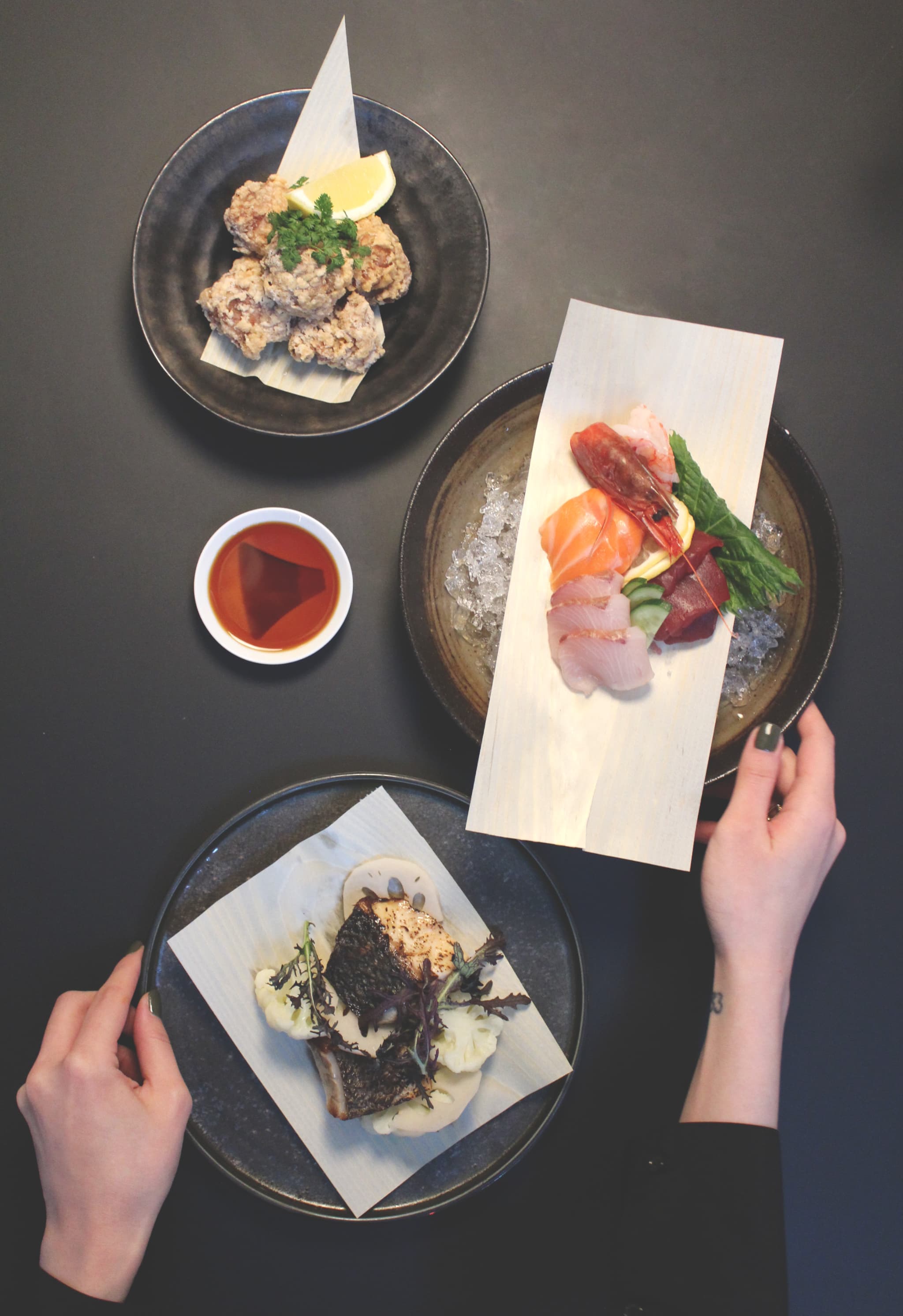
Wooden paper was created by the ingenuity of people who live in the forests and run forestries. It may seem surprising, but if the forest is left untouched, more and more trees grow, that will prevent sunlight from shining through the forest, and the value of the forest will eventually decline. It is important to constantly maintain the forest even artificially, and to keep the cycle of recycling the resources of the forest for people’s lives. Of course it needs not be said that the life of the forest, influenced by the volatile changes in nature, is not easy and requires extraordinary patience and cultivated experience. Wooden paper was born of the ingenuities above. In order to feel the life of the forest closely, it may be fun to take in wooden paper as part of life, starting from one plate on the table.
